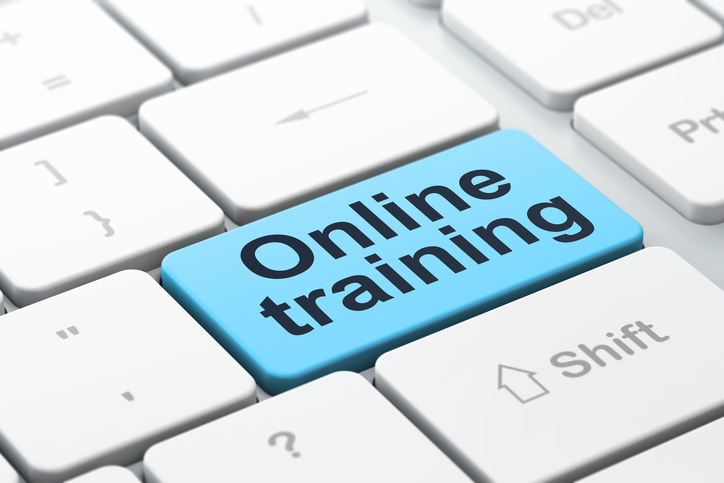
Question: Should we encourage our employees to be friends at work?
Answer: It’s great to create a workplace where people have the opportunity to form friendships, but don’t worry if not everyone shows interest in befriending their coworkers.
Friendships at work can be a way for employees to feel connected and that they belong in the organization. A Gallup poll from 2022 found that having a best friend at work provides essential emotional and social support that people need and ties strongly to key business outcomes.
You can encourage friendships in the workplace by scheduling time during the workday for employees to get to know each other. Team lunches, game rooms, and coffee outings are popular options. Video chats—just to connect, without an agenda—are common in remote organizations. Another way to encourage friendships is to make it clear that employees are allowed to share about their personal lives as they feel comfortable, such as encouraging employees to decorate their office space with personal items or leaders sharing about their lives.
Even with the benefits of having friends in the office, it’s important to remember not everyone wants to make friends at work. Some employees would prefer not to socialize much with their coworkers, and they can be just as productive and engaged. Don’t exclude or marginalize employees who don’t participate in the social activities, and don’t inquire as to why they don’t. In general, while encouraging employees to form friendships can have many benefits, you need to do so in a way that respects all employees’ preferences.
This Q&A does not constitute legal advice and does not address state or local law.
This Q&A was provided by Mineral, powering the UST HR Workplace. Have HR questions? Sign your nonprofit up for a FREE 60-day trial here. As a UST member, simply log into your Mineral portal to access live HR certified consultants, 300+ on-demand training courses, an extensive compliance library, and more.

One of the best ways to build a loyal and emotionally engaged team is by investing in each person’s growth and development. In fact, a recent Gallup study reported that 87% of millennials rank “career growth and development potential” as an important factor when choosing a new job.
You might assume that nonprofit groups would have a tough time competing in this landscape – particularly based on tight budgets and limited resources. But that assumption is often wrong.
In fact, nonprofits are uniquely situated to provide exceptional opportunities for employee growth and ongoing development. That’s because these groups have the advantage of passionate and committed team members who see their work through the lens of helping to make the world a better place.
Turning Team Member Strengths into Growth Opportunities
Each team member and volunteer within your organization brings unique skills and talents.
Many successful nonprofits use these diverse strengths to develop ongoing development opportunities for team members.
You might consider pairing a new employee with an established volunteer on an informal mentorship basis. It can be a great way for the new employee to learn the background of a large project within your organization. At the same time, the more experienced volunteer may benefit from a new viewpoint that looks at a challenge from a different angle.
Cost-effective Ways to Help Improve Skills
Giving team members ongoing access to training or resources to help build their professional skills can bring double rewards. First, it can help them become even more effective in their current role. At the same time, it can also be a smart way to prepare them for future career goals. You can find affordable training solutions from many sources.
Local and online training: Hands-on training on a wide range of topics is often available through your local library or community college. In addition, many online training options such as Coursera, LinkedIn Learning, and Udemy offer inexpensive training modules which can lead to professional certifications. These certifications can be valuable for team members who may be looking to advance their careers.
Learning opportunities at conferences: Sending team members to conferences can also be an effective way to promote a culture of continuous learning. Whether it’s focused on an issue within your nonprofit’s mission, a gathering of affiliated nonprofits or even an event focused on your employee’s individual profession, conferences can provide important opportunities to meet new colleagues and learn how other organizations are handling today’s challenges.
Free training option: Your nonprofit can also take advantage of more than 300 on-demand training courses available online through the HR Workplace offered through UST. This complimentary option is powered by Mineral and includes 60 days of free access (UST trust members have ongoing access). It can be an easy way to set up employee training on project management, workplace safety, and other professional development topics.
Develop Career Paths to Help Team Members Grow Within Your Organization
Many employees look for advancement pathways as they progress through their careers. In addition to fostering growth, this can also be a critical retention tool within your organization.
Consider setting up a ladder of growth goals for team members to work through as they gain experience with your nonprofit. Ideally, this pathway would include ongoing training which was then integrated into successively higher levels of job responsibility.
The career paths within your nonprofit can be an exceptional way to grow your own future leaders. Rather than bringing in new leadership who may not have a firm understanding of your group’s challenges or mission, moving tomorrow’s potential leaders through your nonprofit’s career paths could help ensure continuity of purpose for the future.
Building a culture of continuous learning is an effective way to position your nonprofit as an attractive employer within your community. It’s a smart strategy to reward team members for their dedication and passion to your nonprofit’s mission – without breaking your budget.
Would your organization be interested in freeing up more money in your budget to invest in a culture of continuous learning? Consider talking to UST to learn how thousands of nonprofits saved a total of $56.4 million in 2022 alone. Their innovative unemployment solution can help you uncover hidden savings to help your group better meet its goals and support your team members.
SOURCES:
“7 Ways Nonprofits Can Increase Employee Engagement”, eletive.com, 5/10/24
https://eletive.com/blog/7-ways-nonprofits-can-increase-employee-engagement
“The Benefits of Employee Engagement,” Gallup, updated 1/7/23
https://www.gallup.com/workplace/236927/millennials-jobs-development-opportunities.aspx
“Nonprofit Basics: Employee Engagement Ideas,” Double the Donation, viewed 6/6/25

People First Strategies for Nonprofits
Nonprofit organizations are the backbone of our communities, tackling social, environmental, and cultural challenges with mission-driven passion. Yet, behind every nonprofit’s success is its team of dedicated employees and volunteers, whose commitment fuels the organization’s ability to make a lasting impact.
However, the nonprofit sector grapples with distinct hurdles in attracting, supporting, and retaining top talent. Constrained budgets, emotionally taxing work, and fierce competition with for-profit opportunities make managing a nonprofit workforce complex.
That’s precisely why UST has released its free eBook, “People First Strategies for Retaining and Supporting Nonprofit Employees.” This essential resource is designed to empower nonprofit leaders to confront these challenges directly. Here’s a sneak peek into how this eBook provides actionable insights to transform your nonprofit’s workforce strategy and amplify your impact.
Why People First Matters
Nonprofits directly impact millions of lives. Employing over 12 million workers in the U.S. alone, the sector accounts for over 10% of the workforce. Whether running community programs, advocating for change, or delivering vital services, your employees and volunteers are the lifeblood of your mission.
Nevertheless, the nonprofit workforce is not without its struggles. Leaders face high turnover rates, burnout, and difficulty attracting skilled professionals. These challenges can disrupt your operations and hinder your nonprofit’s ability to fulfill its mission. Adopting a people-first approach helps improve retention, foster engagement, and build a resilient workforce that is ready to tackle societal challenges.
What Is Inside the Free People First eBook?
The eBook is a comprehensive guide with insights that empower nonprofit leaders to integrate people-first strategies into their operations. It focuses on three primary areas that can help shape a thriving and supportive workforce within your nonprofit:
1. Recruitment Strategies
The eBook highlights approaches tailored to nonprofits, such as emphasizing your mission’s impact during recruitment to attract passionate professionals. It also covers ways to overcome budgetary constraints, including leveraging networks and offering flexible work arrangements, such as remote work and mental health days, to meet candidates’ needs.
2. Employee Retention
Retaining talent is vital to maintaining nonprofit stability. The eBook outlines actionable strategies, including creating clear career progression pathways, celebrating employee achievements, and fostering a positive organizational culture. These initiatives ensure your workforce feels valued, engaged, and connected to your mission.
3. Mental Health and Wellbeing Support
Nonprofit employees often operate in emotionally demanding environments, making mental health support an indispensable part of workforce management. The eBook details tools like Employee Assistance Programs (EAPs), wellness initiatives, and fostering open communication to help prevent burnout and promote overall wellbeing.
Why Downloading This eBook Is Essential for Nonprofits
By downloading “People First Strategies for Retaining and Supporting Nonprofit Employees,” you will gain practical tools and frameworks to address challenges like recruitment bottlenecks, skill shortages, and employee burnout. With these strategies, nonprofits can promote their mission while supporting their teams effectively.
Key Takeaways From the eBook
Rooted in decades of serving nonprofit employers, this resource offers expert advice to help you align your people’s strategy with your mission.
Get the Free Guide
Support your nonprofit workforce with actionable strategies tailored to the sector’s unique needs. By putting your people first, you create a sustainable path to achieving your mission and ultimately amplify your impact.
Download UST’s free People First eBook today and take the next step in empowering your team for long-term success.
Together, we can build a brighter future for the communities you serve.

Question: How can we make sure our online trainings are effective?
Answer: Online trainings can be a useful tool for developing talent, but they can also end up being a waste of time and resources, even if the content and presentation are good. The difference between effective and ineffective training often comes down to whether employees are able to absorb and retain the information they receive.
There are lot of obstacles to absorption and retention of trainings. Busy employees may listen to a webinar while they work on other things, catching only tidbits here and there. Or they may put a training video off until they’ve finished a project and are too exhausted to give it due attention.
To avoid these training pitfalls, consider these three tips:
Follow the AGES Model. The NeuroLeadership Institute argues that we learn quickly and retain information best when we focus on one topic (attention), actively connect what we learn to what we already know (generation), experience positive feelings while learning (emotion), and space our intake of information (spacing). For example, cramming training on multiples topics into a tight two-day workshop would be much less effective than spreading that training out over a few weeks. You can learn more about the AGES Model here.
Give employees time to reflect and practice the skills they’ve learned. In some professions, like music and athletics, you spend most of your work time learning, building, and reinforcing skills before the big performance, whether it’s a concert, game, or race. Good performance necessitates constant practice. But in most professions, practice seems like a luxury you can’t afford because you’re expected to be performing during your work time. This is one reason trainings fail to deliver results. To master new skills, employees need time to focus on building those skills. That means some work time needs to be set aside post-training for them to reflect on and practice what they’ve learned.
Align trainings with the present needs and future goals of both the company and the employee. When assessing employee training goals, consider what additional knowledge and skills would enable them to do their jobs better now, but also set them up for success in their future careers. Employees are more likely to be excited by and personally invested in their training if they understand their personal return on that investment. If they don’t recognize its value, it won’t have any value to them.
This Q&A does not constitute legal advice and does not address state or local law.
This Q&A was provided by Mineral, powering the UST HR Workplace. Have HR questions? Sign your nonprofit up for a FREE 60-day trial here. As a UST member, simply log into your Mineral portal to access live HR certified consultants, 300+ on-demand training courses, an extensive compliance library, and more.

Use These Strategies to Help Your Team Prioritize Mental Health
As staff members and volunteers work toward furthering a nonprofit’s mission, they may find themselves shouldering a heavy emotional load. Many times, they’re the ones on the front lines – serving your target audience and witnessing on a first-hand basis the genuine need and impact your nonprofit can have.
It’s natural to consider ways your organization can better support the mental health of staff members and volunteers after a big event leaves the entire team drained. Maybe your group makes it a priority to build mental health support reminders into annual review discussions to help encourage staff to take advantage of benefit options such as an Employee Assistance Plan (EAP).
Working with UST can be a smart way to cut the cost of mental health and wellness benefits for your organization. Take a look at this case study where a client used the savings they got through UST to help fund these types of benefits for their staff.
But the most successful nonprofits prioritize the mental health of each team member on a daily and weekly basis to help foster an environment that more consistently supports balance and emotional well-being – to help avoid pushing staff and volunteers to the point of burnout.
Give The Gift of Time
While budgets are often notoriously tight in the nonprofit world, helping your employees make the most of their time can also be easy on your organization’s bottom line.
Emphasize “Life-Work” Balance
With the emotional demands of nonprofit work, you can help employees prioritize their own mental health by creating a culture which encourages them to fill their own cups first. Staff and volunteers need to feel that they can confidently meet their own family and personal needs before they can dedicate themselves to your nonprofit’s mission.
Encouraging Words and Listening Ears
You may not remember the raise you got a few years ago. But if you’re like most people, the compliment given by a mentor still carries meaning – even if it happened long ago. Your employees are no different.
Lead By Example
Even with the most generous package of mental health benefits, it’s important for your team to see leaders prioritizing their own personal well-being before staff will be comfortable doing the same for themselves.
Openly discussing your own self-care strategies and mental health challenges can normalize these types of conversations so that team members will be more likely to take advantage of mental health benefits when they need them.
If you’re looking for more ideas on helping your staff and volunteers prioritize their mental health, consider taking advantage of the HR Workplace offered through UST. This complimentary resource is powered by Mineral and includes 60 days of free access. You can ask specific questions about a mental health situation within your organization and an expert will get back to you with answers to help you solve the challenge.
SOURCES:
“5 Ways Nonprofits Can Offer Competitive Benefits on a Tight Budget”, guhroo.co, 2/12/25
“How Nonprofit Teams Can Prioritize Mental Health And Prevent Burnout,” Forbes Nonprofit Council, 9/10/24
“The Intersection of Leadership and Mental Health: Best Practices,” Belinda Winter, 10/15/24

Asian American, Native Hawaiian, and Pacific Islander (AANHPI) Heritage Month is a time to honor the rich histories, cultures, and contributions of the AANHPI community. For nonprofits, it’s also an opportunity to amplify diverse voices, build stronger coalitions, and drive meaningful community impact together.
This month is more than recognition; it’s a call to action. It’s about creating spaces where voices from the AANHPI community can thrive, stories can be shared, and organizations can unite in advancing equity and inclusion. For nonprofits and community leaders, this work starts with strong collaboration, impactful resources, and inclusive workplaces.
The Role of Nonprofits in Supporting AANHPI Communities
Nonprofit organizations play a vital role in advancing the well-being of underrepresented communities. With AANHPI communities experiencing barriers such as access to healthcare, education inequality, and workplace discrimination, nonprofits can act as a bridge for support and advocacy. Here’s how nonprofits can make a tangible impact during AANHPI Heritage Month and beyond:
By taking these steps, nonprofits can ensure that their work uplifts and supports the communities they aim to serve.
Join the Movement for Meaningful Impact
This AANHPI Heritage Month, let’s not only celebrate the cultural richness and resilience of AANHPI communities but also take actionable steps to create a more inclusive and equitable environment for all.
Start building a stronger foundation for your nonprofit’s mission today. Take advantage of UST HR Workplace with a FREE 60-Day Trial to access the essential tools you need to support your workplace while driving meaningful impact.
UST HR Workplace is a cloud-based platform designed specifically for nonprofit employers aiming to foster a safe, compliant, and productive work environment. By signing up for our 60-day trial, you’ll access valuable resources that simplify managing your nonprofit. These include live certified HR experts ready to answer pressing questions, over 300 employee training courses for professional development, and thousands of downloadable forms and checklists for everyday HR operations. Additionally, you’ll find an online employee handbook builder and job description tools to attract top talent.
Sign up for your free trial now
Together, we can create lasting change that honors the principles of diversity and inclusion across all the communities we serve.

Question: An employee says that the stress of the job is affecting their mental health. How should we handle this?
Answer: This employee may just need to talk through their concerns and get your help prioritizing or delegating. They may, for example, feel like every single thing on their to-do list is life-or-death by Friday at close of business, when that’s not really the case. Some manager guidance can go a long way, especially for your employees who are usually self-directed.
On the other hand, the stress and mental health effects the employee describes may rise to the level of a disability under the Americans with Disabilities Act (ADA). In this case, we would recommend beginning the interactive process to determine what, if anything, can be done to accommodate them so that the essential functions of the job get done to your standards and the employee is able to keep working. As part of this conversation, you can request a doctor’s note to substantiate the disability.
If you have more general concerns about the effects of stress in your workplace, you might consider ways to help your employees reduce and manage their stress. Tried and true methods include offering health benefits so employees can access health care professionals and paid time off so they can take a day here and there to rest and recharge. Simply encouraging employees to support one another and allowing them breaks during the day can also be a great help.
You can learn more about supporting the mental health of employees by reading our guide on the subject.
This Q&A does not constitute legal advice and does not address state or local law.
This Q&A was provided by Mineral, powering the UST HR Workplace. Have HR questions? Sign your nonprofit up for a FREE 60-day trial here. As a UST member, simply log into your Mineral portal to access live HR certified consultants, 300+ on-demand training courses, an extensive compliance library, and more.

Question: We will be terminating an employee who’s been with us only a month. How do I ensure that they don’t get unemployment?
Answer: Unfortunately, unemployment insurance (UI) benefit claims can be difficult to contest. Most state unemployment departments will only deny benefits if the employee’s misconduct rose to the level of gross misconduct, like stealing or workplace violence.
Fortunately, however, the effect of a single UI claim on your state unemployment insurance tax rate is minimal to non-existent. More importantly, even if your UI rate increases, that additional cost is often less expensive than keeping an employee who shows no willingness or ability to improve. If you have documented employee performance expectations and the employee still isn’t meeting them, don’t let the possibility of a higher UI rate dissuade you from termination. If you’re worried about your UI tax rate generally, the best thing you can do is minimize turnover.
This Q&A does not constitute legal advice and does not address state or local law.
This Q&A was provided by Mineral, powering the UST HR Workplace. Have HR questions? Sign your nonprofit up for a FREE 60-day trial here. As a UST member, simply log into your Mineral portal to access live HR certified consultants, 300+ on-demand training courses, an extensive compliance library, and more.

As a nonprofit organization, your budget probably doesn’t allow for big cash bonuses or expensive rewards. But that doesn’t mean you can’t provide meaningful recognition that incentivizes your MVPs. In fact, sometimes the “no cost” incentives mean the most to your employees.
Here are nine ideas to help you provide solid recognition to MVPs – on a nonprofit budget.
1. Praise in one on ones. Employees want to feel that their contributions matter and that someone sees the efforts they put into their jobs. Calling out an employee’s “extra mile” work, acknowledging milestones and generally praising the everyday contributions they add can be a great way to reward employees – especially for introverts who might not feel comfortable in the spotlight.
2. Praise in staff meetings. It’s not a secret. You probably also have employees who yearn for the spotlight. While praise in their one on ones is good, they’ll feel even more rewarded when you highlight their contributions in public during staff meetings. Consider building a team kudos section into staff meetings to help build opportunities to highlight achievements and milestones.
3. Send handwritten notes. It may seem old-fashioned but the power of a small handwritten note can be significant. It’s not uncommon for employees to keep them and reread the “kudos” message long after their receipt. It only takes a few minutes to write a congratulations or thank you message. But the impact lasts long after it’s sent.
4. Bring in surprise treats. Ordering a delivery of donuts, cookies or some other treat for a Friday afternoon can bring a big boost to morale – especially after your team pulls off a big event or meets a significant milestone. This thoughtful surprise can build team bonding at an inexpensive cost. The camaraderie built around enjoying surprise treats can help your team feel rewarded and see that their efforts are recognized.
5. Give extra time off. Rewarding top performers with extra time off can be a smart way to build loyalty within a nonprofit. Consider an employee who recently finished a big project. Giving them Friday afternoon off costs your organization nothing. But those extra “time off” hours can build a world of loyalty.
6. Award work from home days. Work/life balance can be highly motivating – especially for employees in nonprofit settings. Recognizing extraordinary efforts with work from home days can be an easy way to reward high performers by giving them the flexibility they may need to handle family situations at no cost to your nonprofit.
7. Prime parking spot. Awarding a “VIP” parking spot can be a smart way to recognize employees who go above and beyond in their duties. Be sure to put up a sign that clearly marks the spot as reserved for the VIP employee. Then make it a priority to rotate the winners of the spot between high performers and more junior employees who exceeded expectations during certain events. The goal is to build the perception that anyone within the nonprofit – no matter what their job – could win this coveted parking spot.
8. Lunch with leadership. Especially for lower-level employees, having the opportunity to be heard by senior leadership can be a significant reward. First, it immediately serves as recognition for their contributions. Then it allows them to proactively share ideas or insights that might help senior leadership better understand organizational issues or find new ways to approach challenges the nonprofit may be facing.
9. Employee of the month award. Within a nonprofit, one of the most powerful morale-boosting strategies is recognition. Building an “Employee of the Month” program can be one of the most successful. Creating a prominent “Employee of the Month” display on a bulletin board helps show your employees and the people you serve that you’re recognizing the efforts of people who go the extra mile for your organization.
Be sure to prominently name the person who earned the reward. Display a photo of them. Include a short paragraph summarizing the reasons they won that month’s recognition. Much like the VIP parking spot recognition, it’s important to make sure your organization recognizes workers across the spectrum of your nonprofit.
As a nonprofit organization, boosting employee morale on a budget can be a great way to retain top performers and attract new superstars. If you’d like more ideas for rewarding employees, take advantage of the UST HR Workplace – a full suite of tools powered by Mineral that can help you find even more ways to reward top performers on a budget. Start your free 60-day trial to access articles and checklists that can help you build a culture of recognition within your nonprofit.
SOURCES:
“From Praise to Profits: The Business Case for Recognition at Work,” workhuman.com, 3/28/23
“22 Free Employee Recognition Ideas That Actually Work,” selectsoftwarereviews.com, 11/29/24 https://www.selectsoftwarereviews.com/blog/free-employee-recognition-ideas
“5 Budget-Friendly Employee Recognition Ideas,” marketinginnovators.com https://www.marketinginnovators.com/blog/5-budget-friendly-employee-recognition-ideas

Question: We’d like to start giving cost of living raises to employees on their anniversary dates. What’s the best way to calculate these pay increases?
Answer: When the information is available, employers typically use the consumer price index (CPI) to calculate cost of living increases. It measures the change in prices consumers pay for goods and services such as housing, food, and medical care. Most heavily populated cities have their own CPI.
Most cities often see a small increase each year, but it is important to note that the CPI can also remain the same or decrease. It’s not guaranteed a cost of living increase will occur based on the CPI. You can find the CPI for your urban area by searching the Bureau of Labor Statistics website.
If you tie salary increases to the CPI, your policy should neither guarantee annual raises nor decrease compensation when the CPI decreases. If you choose to guarantee a raise each year, you could have a minimal percentage increase that applies in those years in which the CPI does not increase. However, instead you may consider basing pay increases on merit, market factors, and profitability of the company.
This Q&A does not constitute legal advice and does not address state or local law.
This Q&A was provided by Mineral, powering the UST HR Workplace. Have HR questions? Sign your nonprofit up for a FREE 60-day trial here. As a UST member, simply log into your Mineral portal to access live HR certified consultants, 300+ on-demand training courses, an extensive compliance library, and more.

UST maintains a secure site. This means that information we obtain from you in the process of enrolling is protected and cannot be viewed by others. Information about your agency is provided to our various service providers once you enroll in UST for the purpose of providing you with the best possible service. Your information will never be sold or rented to other entities that are not affiliated with UST. Agencies that are actively enrolled in UST are listed for review by other agencies, UST’s sponsors and potential participants, but no information specific to your agency can be reviewed by anyone not affiliated with UST and not otherwise engaged in providing services to you except as required by law or valid legal process.
Your use of this site and the provision of basic information constitute your consent for UST to use the information supplied.
UST may collect generic information about overall website traffic, and use other analytical information and tools to help us improve our website and provide the best possible information and service. As you browse UST’s website, cookies may also be placed on your computer so that we can better understand what information our visitors are most interested in, and to help direct you to other relevant information. These cookies do not collect personal information such as your name, email, postal address or phone number. To opt out of some of these cookies, click here. If you are a Twitter user, and prefer not to have Twitter ad content tailored to you, learn more here.
Further, our website may contain links to other sites. Anytime you connect to another website, their respective privacy policy will apply and UST is not responsible for the privacy practices of others.
This Privacy Policy and the Terms of Use for our site is subject to change.
UST maintains a secure site. This means that information we obtain from you in the process of enrolling is protected and cannot be viewed by others. Information about your agency is provided to our various service providers once you enroll in UST for the purpose of providing you with the best possible service. Your information will never be sold or rented to other entities that are not affiliated with UST. Agencies that are actively enrolled in UST are listed for review by other agencies, UST’s sponsors and potential participants, but no information specific to your agency can be reviewed by anyone not affiliated with UST and not otherwise engaged in providing services to you except as required by law or valid legal process.
Your use of this site and the provision of basic information constitute your consent for UST to use the information supplied.
UST may collect generic information about overall website traffic, and use other analytical information and tools to help us improve our website and provide the best possible information and service. As you browse UST’s website, cookies may also be placed on your computer so that we can better understand what information our visitors are most interested in, and to help direct you to other relevant information. These cookies do not collect personal information such as your name, email, postal address or phone number. To opt out of some of these cookies, click here. If you are a Twitter user, and prefer not to have Twitter ad content tailored to you, learn more here.
Further, our website may contain links to other sites. Anytime you connect to another website, their respective privacy policy will apply and UST is not responsible for the privacy practices of others.
This Privacy Policy and the Terms of Use for our site is subject to change.